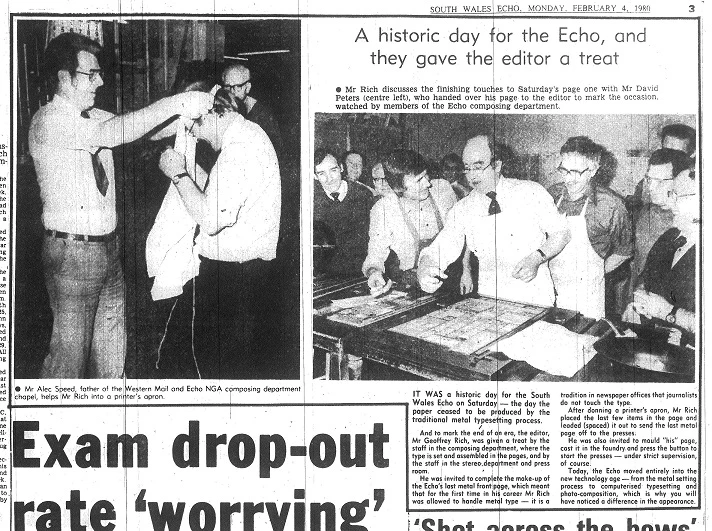A Window into the Industry Collections – July 2016
, 26 July 2016
As usual in this monthly blog post I’d like to share with you some of the objects that have recently been added to the industry and transport collections.
The first object this month is a photograph that shows the first ever rally of the Welsh Automobile Club. This was held at Bracelet Bay (a small bay close to Swansea near Mumbles Head) on 3rd December, probably in 1906 though we are not sure of the year. Can anyone help? The photograph was taken by W. Richards (late W.C. Roberts) of 16 & 17 Castle Street, Swansea.
The Welsh Automobile Club was founded in about June 1904. The Western Mail of the 4th June 1904 reported “At last Welsh motor-cyclists have decided to form a club. I have just received details of a new organisation which is to be known as the Welsh Automobile Club. It intends to recruit its members from all parts of Wales, and has, I believe, a very representative committee… The club intends holding its meetings in all the chief towns of Wales… The organisation will be affiliated to the Motor Union and associated with the Automobile Club of Great Britain and Ireland.”
In 1905 it had a membership of 99 people.
Article from the South Wales Echo, 4th February 1980.
This natural abrasive stone was used to grind/polish tinplate hand rolling mills. Roll turning, grinding and polishing were highly skilled crafts crucial to the working of iron, steel, tinplate and non-ferrous rolling mills. Little is recorded of these crafts, and so this stone is important in representing this important craft. Note that the metal frameworks that supported the stones have long since been scrapped as the last sheet hand mills in Wales closed in the mid-1960s. The stone was obtained by the donor during his employment in Player’s Tinplate Works, Clydach, in the early 1950s.
As stated in previous blog posts, Amgueddfa Cymru holds by far the largest and wide-ranging Welsh-interest share certificate collection held by any public museum. This month we have added to this collection a share certificate for the Mawddach Gold Dredging Syndicate Ltd., dated 1896. This concern undertook the only significant attempts to search for the considerable quantities of gold that would have been washed down into the Mawddach Estaury by both natural weathering processes and during nineteenth century mining operations.
This month, we were donated a hot metal forme which was used to print the front page of Western Mail newspaper on Saturday 2 February 1980. This was the last edition to be printed using this technology.
The forme is made of Linotype 'slugs' of type (cast from a lead-tin-antimony alloy), and plastic 'line blocks' reproducing images, within a steel ‘chase’ [frame]. The formes were usually ‘broken-up’ (i.e. dismantled) after being used, this one being kept for its historic significance. Thus a forme, although crucial to the production of a newspaper, had only a transitory existence of a few hours. This technology was in use from about the 1890s to the 1980s.
The next edition of both the Western Mail (and its sister paper the South Wales Echo) printed two days later on Monday 4 February marked the transition from this 'hot metal' process (both the slugs produced by the Linotype machines and the steroplates were cast using molten type metal) to photo typesetting, offset lithographic printing, and electronic / desk-top page composition.
The two images show the final page of the Western Mail using the last forme. The second images is an article from the South Wales Echo concerning the change over, and showing the work in process..
Finally this month we were donated a lamp recovered from the Albion Colliery explosion of 1894. Inside the lamp was found a letter dated 1928 relating to the South Wales Coal Miners' Hinder March. Full details can be found in this article.
Mark Etheridge
Curator: Industry & Transport
Follow us on Twitter - @IndustryACNMW


Comments - (1)
This was actually the first meet of the club and was in the summer of 1904 after the 11th July when the Decauville CY 38 was registered.
Regards,
Richard Clement